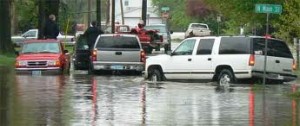Announcement from the cabin attendant, “In the unlikely event . . .”
My last airline flight was a short trip from L.A. to San Francisco. It was a Friday evening flight so before we even started taxiing people had removed their coats and shoes, turned off their overhead lights, and curled up to get in a quick hour’s nap after a long week’s work.
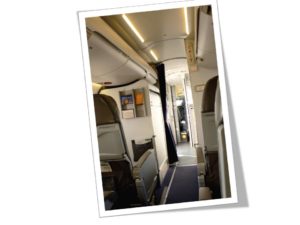
“You have 90 seconds to get 370 people through this doorway . . .”
Alarm bells started going off in my head!
Why? Because I had just finished reading a series of articles about airline safety and here are some of the details that stuck with me.
Three Airplane Safety Facts
It’s easy enough to learn and remember these. Make sure your family knows them, too.
Fact 1: Most airplane disasters happen between 3 minutes after taking off and 8 minutes before landing.
According to a 2017 Forbes.com article, nearly HALF (48%) of all fatal airline accidents happen during final approach and landing. Taking off and starting to climb accounts for only about 13% of fatalities. These statistics have changed over the years; take-offs have become safer as both engines and runways have been improved. Engines are stronger, making it easier for planes to off the ground. Runways have been extended, and in some cases with break-up-able concrete, so if a plane can’t take off it can at least stop safely.
In any case, during both take off and landing the planes are close to the ground, the crew is busy, and options are necessarily limited.
With all that in mind, I was horrified to see that at take-off most of my co-passengers were NOT thinking about emergencies, had NOT taken a look at the emergency brochure, had NOT checked their flotation device, had NOT noted the number of rows to the nearest exit.
Worst of all, many were barefoot.
If we had to evacuate, these people would be groggy, confused, and naturally hesitant to scramble out in the dark onto a strange, maybe hot or broken surface – or into the ocean!
We were set to fail the 90 second evacuation test.
Airplanes are designed to get everyone out within 90 seconds. To accomplish that, over the years airplane designers have widened the galley ways (to 30 inches), widened evacuation slides to handle 70 people a minute, etc. Planes need to be certified that they can be evacuated within the 90 seconds using only half the emergency exits.
The 90 seconds isn’t an arbitrary number.
It’s about how long you can keep moving to save yourself if you can’t take a good clean breath of air.
And that’s because, in the case of a crash, more people perish from smoke inhalation than from injury.
Update: The evacuation rule is also set at 90 seconds because that’s about how long it takes for a fire to develop into a flashover — that is, when everything within the cabin bursts into flame.
Well, our flight didn’t have a problem (after all, I’m writing this) and when we landed, I witnessed an orderly exit. Still, it took a long, long time for everyone to dig out their hand luggage from under the seats and from the overhead racks. And this reminded me of the second thing I learned.
In an evacuation, people naturally want to bring the stuff they boarded with. The problem?
Fact 2: Evacuation slides on modern passenger aircraft are designed to rapidly remove human bodies from a plane that may be as tall as a two story building.
Key word is “rapidly.” A rapid evacuation works only if you JUMP onto the slide. It won’t work if you attempt to sit down to start your slide.
Jumping and falling that fast means you cannot control suitcases, computer bags, or rolling luggage carts. For sure, slowing your fall means you will be plowed into by the 350 lb. guy coming behind you with HIS rolling cart.
Even in evacuation drills, trained volunteers with nothing in their hands get injured sliding that fast and that far.
Luggage on the slide makes injury inevitable.
Fact 3: Once you’re on the ground, the next sensible thing to do is get away from the airplane. Fast!
We have all seen movies where the heroes run away from a burning car, house, or boat and it blows up behind them. (Great special effects.)
This image could just as well be an airplane loaded with aviation fuel. Do our heroes stop to take a video of the flames behind them . . .?
While we’re on the subject, here are just . . .
A Few More Airline Travel Tips and Good Ideas
Take another look at that photo at the top of this Advisory, then keep reading . . .
Negotiating Emergency Doors and Exit Rows
Apparently getting to and then through an emergency door isn’t always as simple as it looks in that brochure. (“Pull down on handle, lift up door.”) In fact, some airline industry professionals suggest that you anticipate that half the emergency doors won’t be able to be opened at all – due to location of a fire, a damaged frame, whatever. That’s why you need to
- Identify the two closest emergency exits as soon as you are seated. (Is one in a different section of the plane altogether?) Take a look at the emergency card to see just HOW those doors gets opened. (“Pull down on handle. Pull door inside. Turn door. Throw back outside???”)
- Count the number of rows to the emergency exits so you can get there in the dark.
- If you can choose your seat, get one within 5 rows of an exit.
(During my research I came across stories of people attempting to open the emergency doors during flight. Mostly, it’s because they (1) were drunk or (2) had never been on an airplane before. Unbelievable.)
Managing Yourself
In a crash, your goal is to get up and get out right now! Do not sit there checking to see if you are OK or waiting for your breathing to return to normal all while wondering what is going to happen next. Do not try to open the above-the-seat compartments to get luggage.
Remember that 90 second rule and get yourself and family members moving to the nearest exit!
Leave your luggage behind!
You are going to have to launch yourself off the side of the plane. Extra weight and/or encumbrances will slow your passage to the door and threaten your ability to slide safely and to negotiate your landing.
Of course, crew members will guide the evacuation. The more assertive they are, the better it will go, so don’t get huffy at being yelled at. Get off the plane!
Assuming all goes well, be more comfortable!
There are lots of good ideas for traveling comfortably, and they depend on your size, the length of the trip, etc. Here are a few “universal” tips! If you click on the images or links you’ll go right to Amazon, where you can check on details and current pricing, and take a look at other models, too. The items shown here have received consistently high ratings and have features I value.
Great Travel Pillow
I’ve traveled for years – why, I remember the days when a turbo-jet was the big thing! Every time I’m on a long distance flight, I wish I could sleep better. I’ve just discovered a NEW TRAVEL PILLOW that might solve the problem! It’s stiff enough to prop up your head and neck, and then is held in place by a soft scarf. Folds up neatly so you can tuck it into your carry-on bag (unlike one of those fat pillows!). Check it out at Amazon – click the image or the link!


Trtl Pillow – Scientifically Proven Super Soft Neck Support Travel Pillow – Machine Washable Grey
Carry-on Bag
What you can carry on for a long flight is really important. Of course, if you have a big bag, it goes into the overhead rack, and you can’t easily get into it until you land. So I usually prefer two bags. A small one carries important papers, glasses, snack, medicines, etc. and tucks into the larger bag for moving within the airport. When I get to my seat, I take out the small bag and go ahead to put the big one up above.
Having just one bag to manage while traveling through the airport is a lot easier and safer, too. Toting several miscellaneous bags makes using the restroom a REAL nuisance, and also makes you a natural target for pickpockets.
Here are a couple of bags that seem to offer both the size and extra security features I look for. They are made by a company called PacSafe. Naturally, they come in different sizes and colors and configurations, but you can look for these:
- Easy to reach outside, easily accessible pockets for tickets, etc. or for that “small bag” I mentioned above
- Fabric and straps embedded with Slashguard, a flexible, stainless steel wire mesh that protects against slash-and-run theft
- A security hook so you can attach the bag to a table or chair leg as you attempt a nap or eat a quick meal during your layover
- Lockdown points for zippers to protect against pickpockets
- RFID blocking pocket for passports, credit cards, etc.
Capacity is measured in liters; sizes start at 15L and run to 45L. The smaller versions are more like day packs; the larger versions more for real hikers, with chest and belly straps. If you plan to carry a computer, be sure to get the right size pack! (Check the height and width measurements, as well as the capacity.)
Here are a couple of examples – a 15L and a 25L. Both have the security features mentioned above. Click on the images or the links to get exact colors, sizes and prices from Amazon. (There are probably a dozen different bags available from Pacsafe so take the time to be sure you get just what you want.)
Warning. Whereas in the US people manage to get aboard with bulging carry-on bags, in Europe the short-haul carriers are extremely strict. If your carry-on exceeds the allowed size limit, expect a charge! This is why I included the third example, below. The Eagle Creek Convertabrief is handy and practical and not stuffable and therefore not going to bulge! Plus you can open it at security to show your computer, without having to remove the computer. (Note: I checked prices today, and found that purchasing this item on Amazon would save you $50 over what it costs elsewhere. That’s one reason why we’re Associates!)

 Pacsafe Metrosafe LS350 Anti-Theft 15L Backpack, Black
Pacsafe Metrosafe LS350 Anti-Theft 15L Backpack, Black


Pacsafe Venturesafe 25L GII, Navy Blue


Eagle Creek Convertabrief, Asphalt Black
Travel Document Holder
At different times you need to have a passport, tickets, credit cards and cash handy. Whoever was in charge made these all different sizes, so having them handy is not always easy.
Generally, I try to have the next needed item in an outside pocket, and I keep the other emergency stuff hidden deeper in luggage. Some things I prefer to actually wear — hence, a document holder. (Obviously, if you have a holder under your clothing you’re not going to be able to access it easily.)
I look for belt style document and money holders that have these features:
- Soft shape and outer material. (Unfortunately, “sturdy” sometimes means stiff, and that is uncomfortable to wear for any length of time.)
- Easily adjustable belt to go around you based on what you’re wearing under it. And that may depend on the weather! (I don’t like my belt against bare skin.)
- Waterproof layer to protect against heat and dampness.
- More than one pocket so you can find things without having to paw through everything.
- RFID protection to keep thieves from stealing your credit card numbers.
Here’s a document holder that seems just about perfect. It’s beige, so you can wear it pretty much invisibly under light-colored clothing. It even comes with a unique “insurance policy” against theft. As always, click on the image or link to get current prices at Amazon, where we are affiliates.


Travel Money Belt with built-in RFID Block – Includes Theft Protection and Global Recovery Tags
Compression Socks
I don’t want to overlook this travel item, which has made all the difference for me and members of my family!
These socks keep your feet and legs warm during long flights and help maintain circulation for feet that have any injuries, swollen veins, etc. I first bought them when I knew I’d be standing a lot for a new job; now I wear them regularly, almost as a “pick me up” for a day when my feet feel tired! For sure, I wear them on long plane flights.
There are all lengths and styles of compression socks, in all price ranges. Most cost between $15 and $30 a pair. I’ve tried flimsy nylon ones. I’ve looked at short ones and tried on some that are so long they would have to be folded over at the top — not a good idea!
I’ve tried the lower tension ones (15-20 mmHg* ) and the more supportive ones (20-30 mmHg *). I own the ones in the picture below and I recommend them highly for travel.
- Sizing is accurate.
- Plenty of room in the toe; compression really starts at the ankle.
- Socks are tall; the amount of compression keeps them up and in position even on my thin legs!
- They are made with wool. (Some compression sock brands are 100% synthetic.)
- I like this pattern! (There are many other patterns; pattern choice does affect price.)


Sockwell Women’s Circulator Graduated Compression Socks-Ideal for-Travel-Sports-Nurses-Reduces Swelling, Medium/Large(8-11), Black Stripe
“In the unlikely event . . .”
Heading back to the subtitle for this Advisory — it’s important to realize that air travel is still statistically safer than other modes of travel.
Update: Aviation deaths have been steadily falling for the last two decades, and 2017 was the safest year in history for commercial airlines, according to industry research. Separate reports by Dutch consultancy T070 and The Aviation Safety Network found “. . .no passenger jets crashes anywhere in the world,” despite more flights being made than ever before. (“Crashes” doesn’t count airplanes downed deliberately by their pilots.)
When there is a crash, though, death statistics can be dramatic. Being aware and taking immediate action may keep you from becoming one of them. In the meanwhile, Bon voyage!
Virginia
Your Emergency Plan Guide Team
P.S. The Number 1 airline fact above – the 3 minute 8 minute rule – came from a book that we have read with great interest. It’s called Spy Secrets That Can Save Your Life: A Former CIA Officer Reveals Safety and Survival Techniques to Keep You and Your Family Protected . The travel safety tips are just a small part of what is fascinating reading about protecting your home and yourself from people out to get you.
. The travel safety tips are just a small part of what is fascinating reading about protecting your home and yourself from people out to get you.
P.P.S. * The amount of compression is measured in mmHg, defined this way by Wikipedia: “A millimeter of mercury is a manometric unit of pressure, formerly defined as the extra pressure generated by a column of mercury one millimetre high and now defined as precisely 133.322387415 pascals. It is denoted by the symbol mmHg or mm Hg.”
P.P.P. S. If you want to get regular tips and recommendations, be sure to sign up for our weekly Advisories below. There’s no cost, and you never know when one of our Advisories will give you a great idea or even be enough to save your life.
 “It’s just part of living here,” one of Hawaii’s residents is quoted as saying over the weekend. He wasn’t planning to evacuate from his home, even though fissures were opening in his neighborhood and lava flows from the Kilauea eruption on Friday were approaching. “I’ve been through this a dozen times.”
“It’s just part of living here,” one of Hawaii’s residents is quoted as saying over the weekend. He wasn’t planning to evacuate from his home, even though fissures were opening in his neighborhood and lava flows from the Kilauea eruption on Friday were approaching. “I’ve been through this a dozen times.”
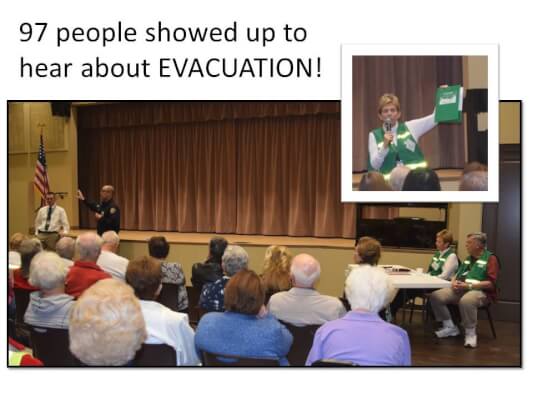 After the wildfires last fall, we kept hearing these two questions from a number of our California neighbors.
After the wildfires last fall, we kept hearing these two questions from a number of our California neighbors.






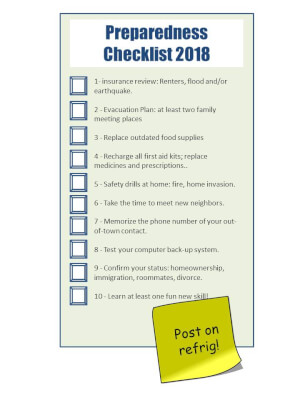 More resources for items on the list.
More resources for items on the list. Fire:
Fire: 
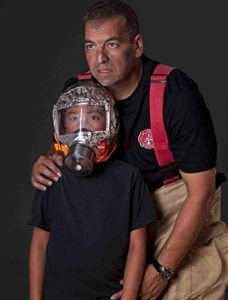
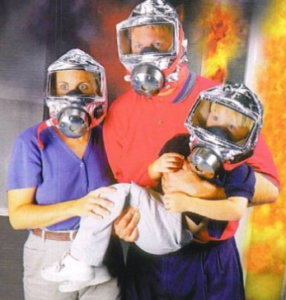
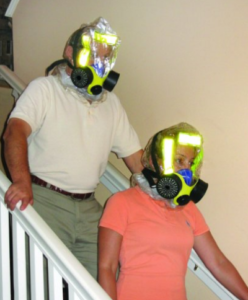
 Do you have what you need?
Do you have what you need?


